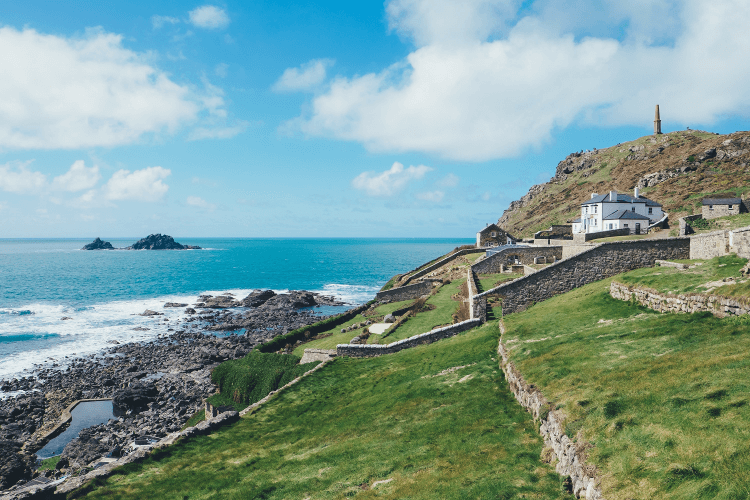Walk The Salt Path
Must-walk places after reading The Salt Path, Raynor Winn's inspiring book about homelessness on the South West Coast Path.
Walk The Salt Path
https://www.contours.co.uk/walk-the-salt-path
by Sally Phillips
Raynor Winn’s life-affirming book, The Salt Path, has sold almost a quarter of a million copies and inspired walkers from all over the world to walk the South West Coast Path, and now it’s found new audiences as a feature film.
The tale documents the true story of Raynor and her partner Moth as they discover the healing power of nature. The couple lost their home, their business, and all their savings in a business investment that went wrong. Left homeless and directionless, they walked the 630-mile coastal path through Cornwall, with only a tent and very little money. For Moth, who is terminally ill, the walk is a test of endurance that helps to revive both his spirit and body.
If you're walking the South West Coast Path through Cornwall, there is much to take inspiration from — The Salt Path is an iconic book about the beauty of the landscape. Find walking holidays along this stunning coastline, or read on to uncover some of the best coastal highlights of the route.
The path at Pentire Point is narrow and stony, and because the headland is exposed, it can often be windy and wild. The best time to walk this stretch of the path is at sunset, where the short, burnt grass glows a beautiful orange colour, speckled with rabbits. On the walk, you will pass an incredible Iron Age fort, as well as burial mounds that date back to the Bronze Age. Along The Rumps, you will pass through woodland, seeing the sandy coves and collapsed caves.
You can also spend some time at Polzeath Beach, which is incredibly popular for surfing. Some of the world’s top-ranked surfers, including Martin Potter, are from the area, and have surfed the waves at Polzeath.
Cape Cornwall is one of only two capes in the UK, and is a lot quieter to walk than Land’s End. The impressive, sculptural Brison’s Rocks are a must-see, as well as the chimney stacks built into the landscape during the 1800s, when the Cape Cornwall Mine was thriving. There have been many shipwrecks at Brison’s Rocks, which are also known as “General de Gaulle in his bath.”

Photo by Annie Spratt on Unsplash
Cape Cornwall is an important nesting ground for seabirds in the area, including fulmars, gannets and storm-petrels — you can see plenty of these in the spring and summer months.
The walk through Bosigran is steeped in mining history; you can see engine houses that are over 150 years old as you walk through the moorland. There are some stunning coastal views as you walk along the path, and you can even take a detour over a stile, and head down to Porthmeor Cove — a little rugged adventure. The nearby Bosigran castle is an Iron Age Promontory Fort, which overlooks some very steep, granite cliffs. The castle wall is 100 metres long, protecting the castle inhabitants from the wild Cornwall weather.
The Salt Path depicts the breath-taking landscape of Cornwall beautifully. Walking the South West Coast Path, you too can follow Raynor and Moth’s footsteps and experience a little of what they felt. Raynor and Moth now live in Cornwall.